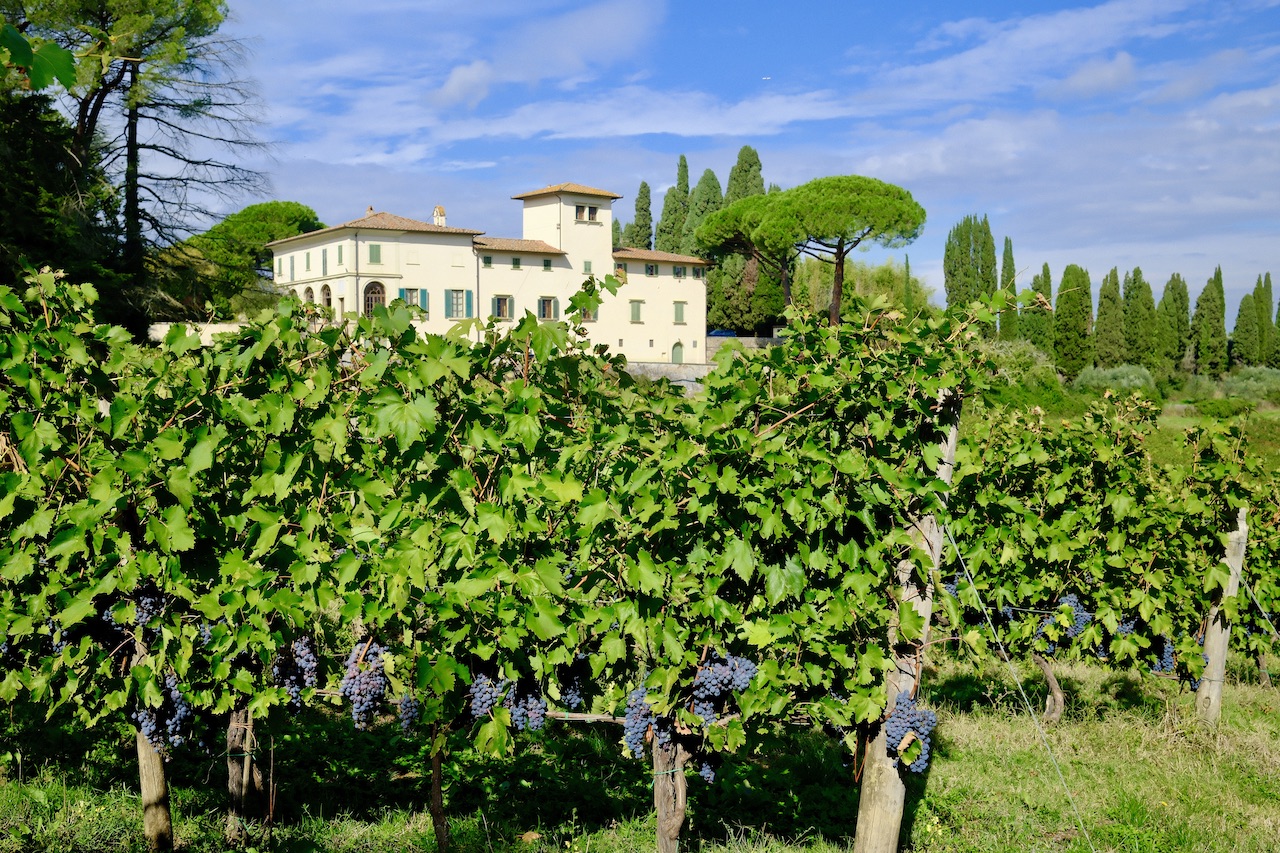Wine Tours in Tuscany - About Angie - +39 3333185705 - angie.chianti@gmail.com
It’s almost every wine-lovers dream: sitting out on a sprawling terrace with a glass of sparkling ruby red Chianti (and hopefully the bottle nearby – just uncorked), while looking out onto the rolling hills filled with vineyards and olive groves that almost glow golden under the setting Tuscan sun. Chianti! Everyone breathes out the word in a romantic huff, and yes, the sunsets are enchanting, and the taste of the wine is spectacular, but few know how much history lives and breathes in each bottle. The history of Chianti began even before the Romans.
The history of Chianti: Etruscans and Wild Grapes – The Origins
Grapes were growing naturally in the hills of the area we now call Chianti when the ancient Etruscans lived in the area almost three thousand years ago, and soon they were cultivating the vines to produce their own wines which are the base of what we know Chianti wine as today. The name Chianti might even come from the Etruscan word Klante – which as apparently the name for the stream nearby. So the origins of the name and the grapes were set, it was time to let the Tuscan sun do its work.
Roman Rule and Latin Farming
It wasn’t until 59 BC, that Julius Caesar, (yes, that one!) founded the city of Florence where we know it today, naming it Florentia, and took control of the surrounding area including the Chianti.
The Romans utilized the roots the Etruscans had laid and continued to advance the cultivation of the wine harvest further, leaving their influence on the land, and on the language.
Sangiovese, the name of the grape that is the base for any Chianti, is based on the Latin language and thus Roman viniculture so we see the Roman Empire has also made it’s lasting mark on the Chianti wine. At the fall of Rome, the area did take a bit of a hit, though it bounced back in the 13th century.
Medieval Era and Rooster Fights
It was in the Medieval ages that the Chianti we know was first mentioned in documentation as a wine region, and though we know the Chianti as a deep red today, the name originally was for a light white wine instead. It was also around this time in the 13th century when the most famous tale of the Chianti took place:
The Tale of the Black Rooster
The Republic of Florence and the Republic of Siena were in a constant battle over the hills
between the two cities – now what we call the area of the Chianti Classico wine and the original
area called Chianti, but more on that later. Somehow, the two cities eventually agreed to resolve
the feud with a knight on horseback taking off from each of the city gates when the rooster
crows. The spot they met would mark the border.
Two official roosters were chosen for this extremely important event – one black, and one white.
Siena chose the white, and gave it a huge meal for dinner, hoping to make it strong and crow
loudly in the morning. Florence chose the black rooster, the Gallo Nero, and refused to feed it
the night before the race.
Even before the sun rose, the hungry rooster was crowing, and the knight set off in the
darkness. The knight from Siena only was able to ride 12km (7mi) from the walls of Siena
before the Florentine rode into sight. That is why the winning Gallo Nero, or the Black Rooster,
is still the symbol of the Chianti Classico wine today.
The first to take the rooster as their symbol was the Lega del Chianti, a military league that was made to protect the area of the wine production from enemies.





